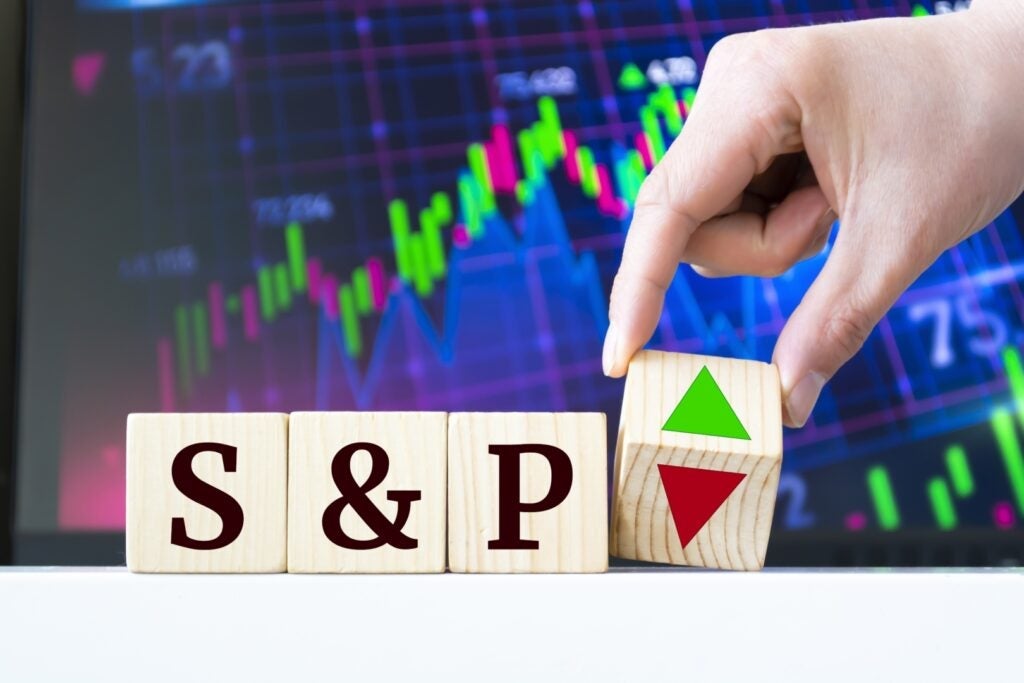
Goldman Sachs delivered a sobering reality check for equity investors, slashing its year-end S&P 500 target as it expects weaker corporate profits, slower economic growth, and a higher chance of recession to weigh on valuations and returns.
In a note shared Sunday, Goldman Sachs chief equity strategist David J. Kostin said the bank now expects a 5% drop in a 3-month horizon, down from 0%.
The 12-month S&P 500 price target has also been downwardly revised to 5,900 points, up 6% from current levels compared to earlier estimates of a 16% gain.
The downward revision stems from a mix of harsher macroeconomic assumptions. Goldman Sachs now expects U.S. GDP to grow at just 1.5% annually, down from 2%, average core personal consumption expenditures inflation to hover at 3.5%, up from 3%, and average U.S. tariffs to spike to 18%—a full 15 percentage points above current levels.
The S&P 500 ETF Trust SPY is already down over 5% year-to-date.
Slower Earnings Growth In Sight
Goldman’s base case scenario anticipates significantly slower earnings expansion among S&P 500 companies in the coming years.
The investment bank lowered its earnings-per-share growth estimates for the index to 3% in 2025 and 6% in 2026, down from 7% previously for both years. That equates to EPS levels of $253 next year and $269 the year after.
Those figures fall short of both the top-down strategist consensus, which calls for 9% growth annually, and the more optimistic bottom-up forecasts by equity analysts, expecting 9% and 14% for 2025 and 2026, respectively.
Kostin said the cuts were driven by the revised macro outlook, and noted that “each 100 basis point change in U.S. GDP growth is worth about 3-4% of S&P 500 EPS growth,” while “each 5 percentage point increase in the average tariff rate reduces our EPS forecast by 1-2%.”
Valuations Under Pressure
Alongside earnings, stock valuations are also seen compressing. The S&P 500 began 2025 trading at a price-to-earnings ratio of 21.5 times forward EPS, but has since dropped to 20 times.
Goldman projects the multiple will decline further to 19 in the near term, recovering only slightly to 19.5 by year-end.
“Slowing growth and rising uncertainty warrant a higher equity risk premium and lower valuation multiples,” Kostin said, citing increased economic policy uncertainty, fragile consumer sentiment, and muted growth expectations.
In fact, much of the recent 9% drop from the S&P 500’s February peak to its current level came from this valuation reset alone.
If macro conditions deteriorate further, Goldman suggests valuations could fall even more aggressively. For comparison, previous market downturns saw P/E ratios hit 15x in 2022, 13x in 2020, and 14x in 2018.
Recession Risk Is Back On The Radar
Goldman assigned a 35% probability that the U.S. economy will enter a recession in the next 12 months.
If that scenario materializes, the S&P 500 could face another leg down, with a potential drawdown of 25% from its February peak—implying a bottom around 4,600, or roughly 17% lower from current levels.
That would also entail a 13% drop in earnings, aligning with historical patterns during downturns.
Read now:
Image: Shutterstock
Momentum66.07
Growth–
Quality–
Value–
Market News and Data brought to you by Benzinga APIs
© 2025 Benzinga.com. Benzinga does not provide investment advice. All rights reserved.


